Cereal crops or simply cereals contain a whole complex of various useful vitamins, as well as proteins, carbohydrates and amino acids, which are very necessary for our body.
Oats.
The nutritional value of this cereal is higher than the rest. It is rich not only in dietary fiber, but also in a whole complex of vitamins (a, b and E. in addition, oats contain a lot of minerals, starch and amino acids
. This set of elements strengthens the immune system, and also improves the absorption of food, helps to remove cholesterol, lower blood pressure and protect the body as a whole.
Kus - kus.
Wheat couscous is rich in vitamin B 5, which raises vitality, fights chronic fatigue and depression, and cures insomnia. The same vitamin improves skin and hair regeneration, which is important for early graying. The normal functioning of the gastrointestinal tract is facilitated by a sufficient amount of trace elements found in couscous - phosphorus, potassium, iron, copper and dietary fiber. They also stabilize water-salt metabolism and enhance brain activity.
Quinoa.
By the strength of the effect on the human body, quinoa cannot be compared with any cereal. It is a very valuable source of easily digestible vegetable protein. In some varieties of grains, its content exceeds 20%, which is much more than the average. At the same time, the protein contained in quinoa groats is distinguished by a large balance of amino acid composition and is similar in properties to milk proteins.
However, in addition to protein, quinoa contains many other useful substances. It is rich in iron, phosphorus, zinc and calcium. It contains vitamins, minerals, fiber, carbohydrates, fats, etc.
Red rice.
Red rice contains 78% carbohydrates, 1% fat, and 8% protein, which contain some of the essential amino acids found only in meat. That is why red rice, in terms of its nutritional value, is able to partially replace it in nutrition. The advantage of red rice is the absence of gluten protein, which is the cause of allergic reactions in some people.
Red rice is a rich source of B vitamins (1, 2, 3, 6, 12) and minerals: calcium, potassium, phosphorus, iodine and iron, which is indispensable for anemia.
Buckwheat.
Buckwheat is a champion among cereals in terms of the content of vitamins, proteins, micro and macro elements, which not only improves metabolism, but also improves the functioning of the whole organism.
The high content of iron affects the circulatory and cardiac systems, preventing many diseases.
In a vegetarian diet, this product will be an indispensable part of the table, since with its components it can almost completely replace both white and red meat.
Wild rice.
In terms of the amount of trace elements and vitamins, wild rice can hardly be compared with any other cereal. Calcium, magnesium, zinc, iron, copper, phosphorus, iodine and manganese are important components contained in rice and so necessary for the normal functioning of the human body.
In addition, wild rice grains are rich in B vitamins, especially folic acid (at 9), the amount of which is five times higher than that of ordinary rice. The protein that is part of this cereal contains important amino acids: threonine, lysine and methionine.
The high content of protein in the cereal helps to strengthen the muscles of the body. Wild rice is a whole grain that is free of cholesterol and saturated fat. There are approximately 357 calories in 100 grams of rice.
Bulgur.
Adherents of a healthy diet have long given preference to this cereal. It is easily digested, stimulates metabolism and actively removes accumulated toxins and slags from the body.
Bulgur contains folic acid in the amount needed for daily consumption, as well as other B vitamins: riboflavin, pantothenic acid, pyridoxine. Also among the useful substances it contains iron, zinc, magnesium, sodium, phosphorus, selenium and manganese. In addition, bulgur is rich in vitamins PP, K, E.
What belongs to the cereal family
Cereals, or Cereals (lat. Gramíneae), or Bluegrass (lat. Poáceae) - a family of monocotyledonous plants, which includes such well-known and long-used plants in the economy as wheat, rye, oats, rice, corn, barley, millet, bamboo , sugar cane.
It is customary to endow porridge with extremely useful properties. However, there are also potential "pests" among them. Nutritionists consider cereals with a high glycemic index as such, as well as those in which there is practically no fiber. They provide the body with empty calories. There are several record holders here. Semolina. It is a product of the smallest grinding of wheat, therefore, it contains vegetable protein and vitamins in a small amount. However, the bulk of its composition (70%) is formed by starch, which should not be consumed by overweight people or those who seek to reduce it.
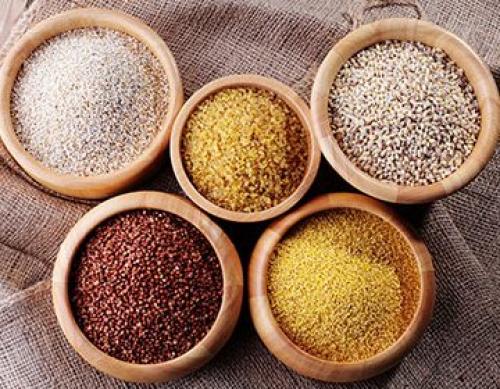
The benefits of porridge in the morning from semolina are also exaggerated for babies. The cereal contains a complex mucopolysaccharide that the child's body cannot break down. It also reduces the intensity of movement of the intestinal villi, inhibiting digestive activity. White rice. Nutritionists call it an empty calorie source. There are really a lot of them in white rice, but there are practically no vitamins and minerals. Brown, wild and red varieties of this cereal are of high value. Instant oatmeal. Surprisingly, oatmeal can also be harmful. This is called finely ground flakes that boil in 5 minutes, or those that can simply be steamed with boiling water. This product does not contain any fiber or other valuable components. The calorie content of oatmeal from a bag of sugar is equivalent to a piece of cake.
Harmful can be any cereal, if there is its individual intolerance. More than 30% of the world's population suffers from gluten intolerance, and in 1% of people this genetic condition provokes severe consequences after eating gluten-containing cereals. With regular consumption of cereals with gluten (oatmeal, wheat, semolina, pearl barley), celiac disease is formed. It manifests itself in persistent indigestion with a decrease in the intensity of absorption of nutrients from the intestines. Gluten is present not only in cereals, but also in products from them. It is found in bread, pasta, sausage and canned food as additives. There is no cereal protein in buckwheat, rice, corn grits, millet. Rules for preparing healthy cereals To get the maximum benefit from the product, it must be properly selected and prepared. Then the porridge will turn out to be really useful. Here are a few subtleties of proper food preparation. The less processing the better. Any grain contains the main spectrum of useful substances in the upper shells. Therefore, the less they are lost during production, the more valuable the dish will turn out. Eat wholemeal oatmeal, brown rice and cereals that only break the kernels: corn, barley (barley). Rinse the cereal. This will save it from dust and will not wash away any useful substances. The need to wash the grain is dictated by elementary hygiene. Consume without fat. The advantage of oatmeal, for example, is the ability to bind and remove cholesterol. However, it is completely lost when consumed with milk, since the cereal binds milk fat, and not the one that settled in your intestines. Other cereals with fiber work similarly. For maximum benefit, boil them in water. Use healthy and tasty supplements. Porridge for breakfast will become much tastier if you add raisins, dried apricots to it, put pieces of apples or nuts, pour flax grains, sesame seeds, decorate with fresh berries. Such components do not increase the calorie content of the dish, but make it more tasty and healthy. Eat valuable cereals regularly, their benefits and harms are individual and depend on the characteristics of your body. However, the number of useful cereals is large. And among them you will definitely find those that will please the taste on the everyday table and will not bring unpleasant consequences.
Source
Grain classification
The earlier classification of cereals provided for the division into 15 tribes, of which the following had the greatest economic importance: 1. Maize tribe The representative is corn. Panicle and cob inflorescence Male flowers form a panicle, and female flowers form an ear. 2. Triba Varietal. This includes sorghum. Inflorescence - panicle. 3. Tribe Millet. Includes millet. 4. Tribe Rice. It includes rice - the most important bread plant. Likes warmth and moisture. 5. Tribe Field species. This is a group of meadow grasses used as animal feed, for example, feather grass, timothy grass, etc. 6. Oat tribe. The main representative is oats. It contains a huge number of species in the genus, including both cultivated plants and malicious weeds. Inflorescence - panicle. Oat lemmas have awns. 7. Tribe Wheat (formerly called Barley). It is to this tribe that the most important cereal crops belong: wheat, rye and barley. Spike inflorescence. Of the wild plants - this is wheatgrass. Over time, the classification of cereals has undergone changes. So, for example, at the XXXVII Komarov Readings (1986), N. N. Tsvelev proposed a system according to which the family of Cereals (Poat grasses) is divided into two subfamilies: Bamboo-like cereals with 14 tribes and True cereals with 27 tribes. Currently, it is customary to subdivide cereals into six subfamilies. For grain science, three subfamilies are of greatest importance: Bluegrass (wheat, rye, oats, barley), Millet (millet, sorghum, corn, chumiza) and Rice (rice). Nevertheless, the previously used classification of cereals into 15 tribes remains convenient in use. These classifications are botanical, while the above classification of cereals into true and millet breads is based on morphobiological and economic characteristics.
What about cereal products?
Cereals and grains, from which we prepare cereals for breakfast and side dishes for the second, are a whole complex of useful vitamins, proteins, carbohydrates and amino acids that our body needs. Buckwheat, rice, oats, corn, millet, rye, wheat are cereals. Many people know that with the help of cereals you can lose weight.
What are the crops
Cereal crops are divided into cereals and legumes. Most grain crops (wheat, rye, rice, oats, barley, corn, sorghum, millet, chumiza, mogar, paisa, dagussa and others) belong to the botanical family Cereals; buckwheat - to the Buckwheat family; mealy amaranth - to the Amaranth family.
Most types of cereals belong to grain crops. These are wheat, rye, oats, rice. Flour, pasta and bakery products are obtained from grains, used as animal feed. Nutritious oil is obtained from corn seeds.
Bamboo, which grows in tropical countries, is used as a building and finishing material.
Meadow cereals are used for pet food, both fresh and dried. A powerful root system determines the use of these plants for fixing sands and preventing soil shedding.
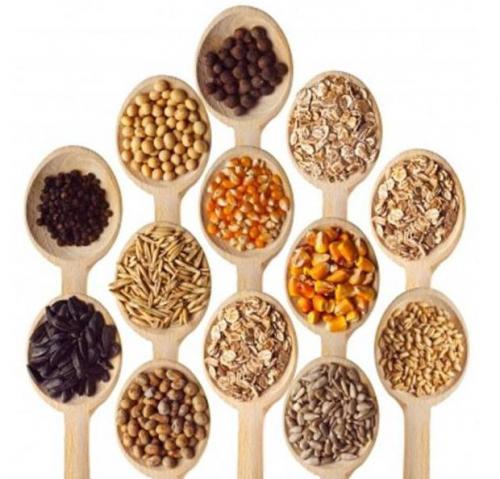
Cultivated cereals are specially grown for use as a food product. In writing I use whole and crushed grains, flour and pastries from it. Millet 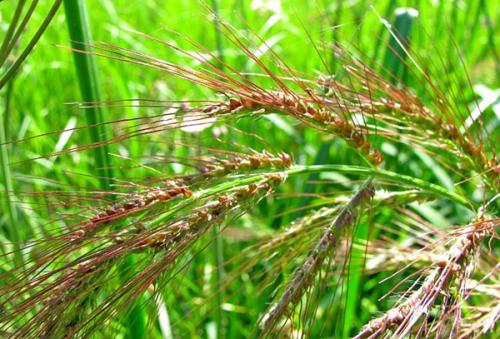 Millet is a plant that tolerates heat and drought very well. Millet is of value, it is from its seeds that millet is extracted. Homeland - Southeast Asia. It is grown everywhere, including on saline soils. Increased acidity is the only weakness of millet, it cannot stand it and dies. The grains are used to make cereals, soups, and also as poultry feed. oats
Millet is a plant that tolerates heat and drought very well. Millet is of value, it is from its seeds that millet is extracted. Homeland - Southeast Asia. It is grown everywhere, including on saline soils. Increased acidity is the only weakness of millet, it cannot stand it and dies. The grains are used to make cereals, soups, and also as poultry feed. oats 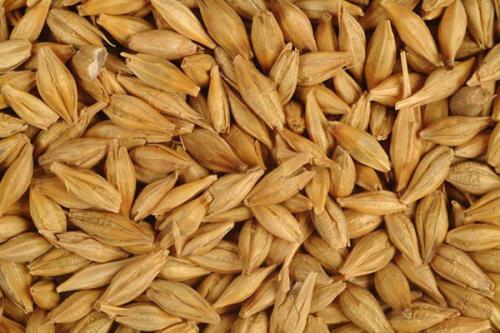 An annual plant that is widely used in agriculture. It is resistant to negative environmental conditions, it can be grown on those lands where it is cold enough. Originally from some provinces of East China, Mongolia. Previously, it was perceived by farmers as a weed, but its fodder properties refuted this opinion. Later, they learned to make various pastries from it, and the Germans brewed the so-called white beer. It is filmy and naked. The latter is less common than the former and requires a lot of moisture. Barley
An annual plant that is widely used in agriculture. It is resistant to negative environmental conditions, it can be grown on those lands where it is cold enough. Originally from some provinces of East China, Mongolia. Previously, it was perceived by farmers as a weed, but its fodder properties refuted this opinion. Later, they learned to make various pastries from it, and the Germans brewed the so-called white beer. It is filmy and naked. The latter is less common than the former and requires a lot of moisture. Barley 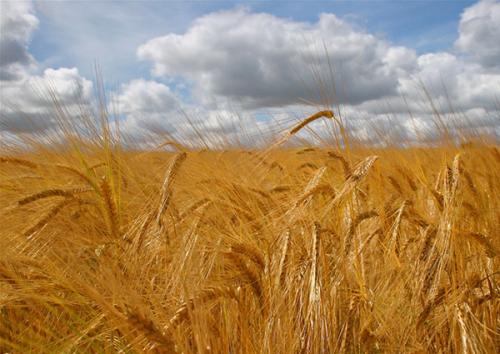 One of the most important cereal crops, developed relatively recently, about seventeen thousand years ago. One of the first to notice its benefits was the inhabitants of the Middle East. Bread made from barley flour is heavier, rougher than wheat, but is considered a more useful product even now. The plant is single-flowered, pollinated independently. Nowadays, barley is grown for both fodder and food needs. Barley beer is also common among connoisseurs of this product.
One of the most important cereal crops, developed relatively recently, about seventeen thousand years ago. One of the first to notice its benefits was the inhabitants of the Middle East. Bread made from barley flour is heavier, rougher than wheat, but is considered a more useful product even now. The plant is single-flowered, pollinated independently. Nowadays, barley is grown for both fodder and food needs. Barley beer is also common among connoisseurs of this product.
Corn
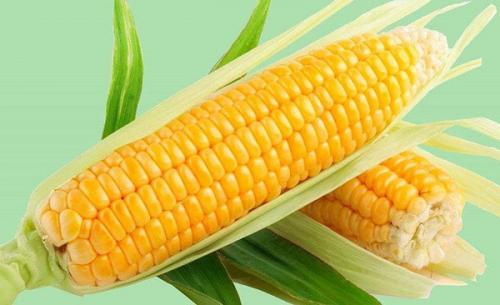 Also called maize or sweet corn. It is used for feed and food needs. Of the entire genus, this is the only representative of cultivated cereals. It differs from other species of the whole family by a large cob with yellow seeds. Country of origin - Mexico.
Also called maize or sweet corn. It is used for feed and food needs. Of the entire genus, this is the only representative of cultivated cereals. It differs from other species of the whole family by a large cob with yellow seeds. Country of origin - Mexico.
In terms of sales, it is in second place after wheat. It is used to make cornstarch, canned food and even medicines.
Rice
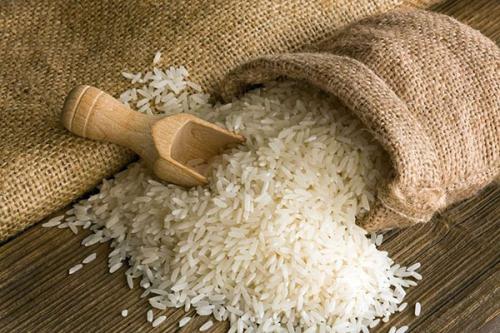 An annual herbaceous plant. Requires special attention, the plant is capricious, needs a lot of moisture. It is grown up in the countries of Asia, but some types of rice - in the African countries. Rice fields are made so that they can be flooded with water (protection from the sun's rays) while the plant matures, but then drained to harvest. Groats and starch are produced from grains. If the grains are germinal, then they are great for making rice oil.
An annual herbaceous plant. Requires special attention, the plant is capricious, needs a lot of moisture. It is grown up in the countries of Asia, but some types of rice - in the African countries. Rice fields are made so that they can be flooded with water (protection from the sun's rays) while the plant matures, but then drained to harvest. Groats and starch are produced from grains. If the grains are germinal, then they are great for making rice oil.
Produce alcohol, medicines from rice. Rice straw is used to make paper, and fodder bran is made from the husk.
Rye
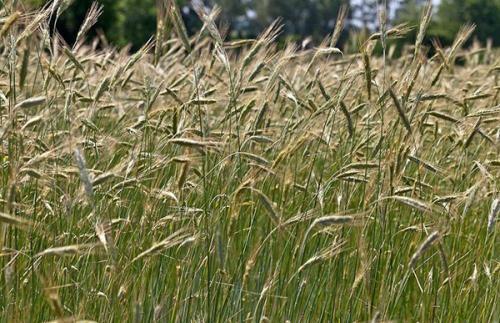 Nowadays, winter rye is mainly used for sowing, as it is more resistant to adverse conditions. An unpretentious plant, unlike wheat, rye is not particularly sensitive to soil acidity. The best soil for growing is black soil. It is used for the production of flour, kvass and starch. Rye easily suppresses weed grass, which greatly facilitates the fight against factors harmful to cultivation. The plant is biennial and annual. Most popular in Germany.
Nowadays, winter rye is mainly used for sowing, as it is more resistant to adverse conditions. An unpretentious plant, unlike wheat, rye is not particularly sensitive to soil acidity. The best soil for growing is black soil. It is used for the production of flour, kvass and starch. Rye easily suppresses weed grass, which greatly facilitates the fight against factors harmful to cultivation. The plant is biennial and annual. Most popular in Germany.
Wheat
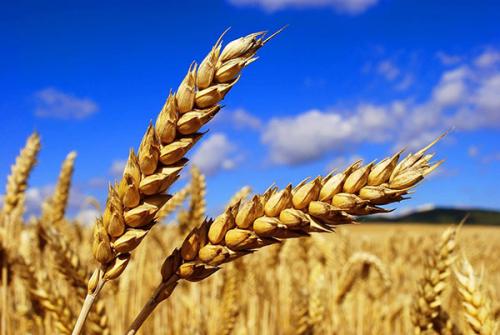 This grain crop is in the first place in cultivation and sale. High-grade bread is baked from wheat flour, confectionery and pasta are produced. Wheat is also used in the production of beer and other spirits. It is grown on almost all lands, except for territories belonging to the tropical zone. Includes about ten species.
This grain crop is in the first place in cultivation and sale. High-grade bread is baked from wheat flour, confectionery and pasta are produced. Wheat is also used in the production of beer and other spirits. It is grown on almost all lands, except for territories belonging to the tropical zone. Includes about ten species.
Many believe that yellow spikelets with long whiskers are wheat. However, it is not. Wheat has greyish spikelets, fewer grains, and short whiskers.
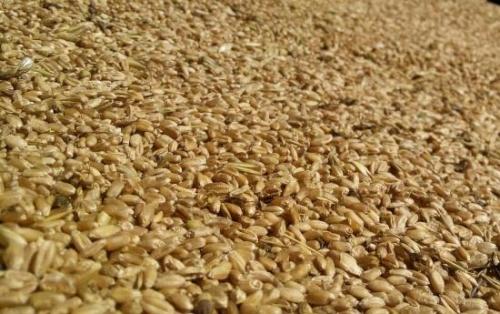 The Cereal family consists of more than 750 genera, which include more than 11 thousand species. Even in the Arctic, cereals can be found, a list of the most common species and a botanical classification, the meaning of cereals will be given below. Contents: Cereals, brief description and botanical classification The family of Cereal plants mainly includes herbaceous annuals or perennials, although there are shrubs and even trees. All cultures are united by a common structure: The stems of cereal crops are hollow inside and consist of knees interconnected by swollen and therefore clearly visible internodes. Each of them has a partition and the stem looks like a partitioned hollow pipe. Stems with such a structure in botany are called straw. In rare exceptions, the inside of the knee is filled with loose tissue, like that of sugar cane, sorghum, and corn. In cereals, secondary roots are well developed, and the main root either stops growing early or stops growing after germination. The leaves of cereals are vaginal, the edges of the vagina are rarely closed.
The Cereal family consists of more than 750 genera, which include more than 11 thousand species. Even in the Arctic, cereals can be found, a list of the most common species and a botanical classification, the meaning of cereals will be given below. Contents: Cereals, brief description and botanical classification The family of Cereal plants mainly includes herbaceous annuals or perennials, although there are shrubs and even trees. All cultures are united by a common structure: The stems of cereal crops are hollow inside and consist of knees interconnected by swollen and therefore clearly visible internodes. Each of them has a partition and the stem looks like a partitioned hollow pipe. Stems with such a structure in botany are called straw. In rare exceptions, the inside of the knee is filled with loose tissue, like that of sugar cane, sorghum, and corn. In cereals, secondary roots are well developed, and the main root either stops growing early or stops growing after germination. The leaves of cereals are vaginal, the edges of the vagina are rarely closed. 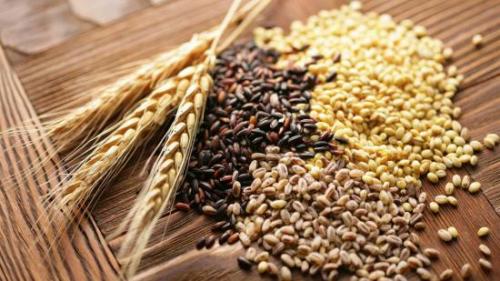 Leaf plates are most often ribbon-like, narrow, sometimes folded in half or rolled into a tube. Inflorescences may be different, but collected from miniature spikelets. Most often, spikelets are stacked: The taxonomy of the family has changed several times over the past century, sometimes it was divided into 2, sometimes into 12 subfamilies. For example, at one time Centotekovye also belonged to the Prosovs. Modern taxonomists have divided the cereals into seven subfamilies: The following are lists of cereals belonging to the various subfamilies. Lists of cereal crops Subfamily Chlorisaceae include: The following cereals belong to the subfamily Feather grass: Subfamily Bamboo: Video about cereal crops: The subfamily Bluegrass or True cereals include: Crops from the subfamily Millet: History of cereals, their significance for mankind Overestimate the importance of cereals in the history of mankind difficult. They are distributed all over the planet, where there are no multi-meter eternal glaciers. Cereals grow to the borders of glaciers, including high mountains. Savannahs and steppes are the real kingdom of cereal plants. Important for a person is the fruit of cereals - grains. Its endosperm is the richest source of nutrients.
Leaf plates are most often ribbon-like, narrow, sometimes folded in half or rolled into a tube. Inflorescences may be different, but collected from miniature spikelets. Most often, spikelets are stacked: The taxonomy of the family has changed several times over the past century, sometimes it was divided into 2, sometimes into 12 subfamilies. For example, at one time Centotekovye also belonged to the Prosovs. Modern taxonomists have divided the cereals into seven subfamilies: The following are lists of cereals belonging to the various subfamilies. Lists of cereal crops Subfamily Chlorisaceae include: The following cereals belong to the subfamily Feather grass: Subfamily Bamboo: Video about cereal crops: The subfamily Bluegrass or True cereals include: Crops from the subfamily Millet: History of cereals, their significance for mankind Overestimate the importance of cereals in the history of mankind difficult. They are distributed all over the planet, where there are no multi-meter eternal glaciers. Cereals grow to the borders of glaciers, including high mountains. Savannahs and steppes are the real kingdom of cereal plants. Important for a person is the fruit of cereals - grains. Its endosperm is the richest source of nutrients.
Therefore, the cultivation of cereals for human consumption has been confirmed by scientists for more than seven thousand years. The cultivation of wheat was the real engine of progress. It is with her that the invention of the wheel and the plow is connected. It is believed that the ancient ancestor of this culture was wheatgrass. At the dawn of agriculture, people grew spelled or spelled wheat. Later, it was almost everywhere replaced by durum wheat. By antiquity of origin on the Eurasian continent, barley can compete with wheat, and on the American continent, corn has been grown from cereals since ancient times, which became the engine of Mayan culture.
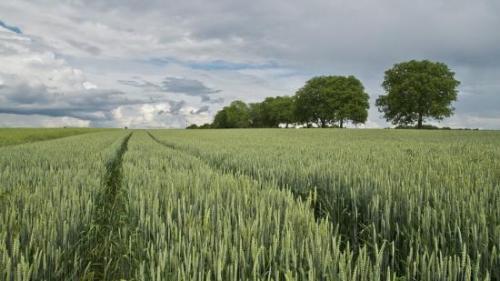 Rye began to be grown by man much later than wheat. Here, scientists give priority to the Slavic peoples, since rye gave a richer harvest in a temperate climate. A real breakthrough in history was the production of bread by people from the ground grains of cereals. Thus, we can conclude that modern people owe food well-being precisely to plants from the Cereal family.
Rye began to be grown by man much later than wheat. Here, scientists give priority to the Slavic peoples, since rye gave a richer harvest in a temperate climate. A real breakthrough in history was the production of bread by people from the ground grains of cereals. Thus, we can conclude that modern people owe food well-being precisely to plants from the Cereal family.
All ornamental grasses and grasses in landscape design are divided into annuals and perennials.
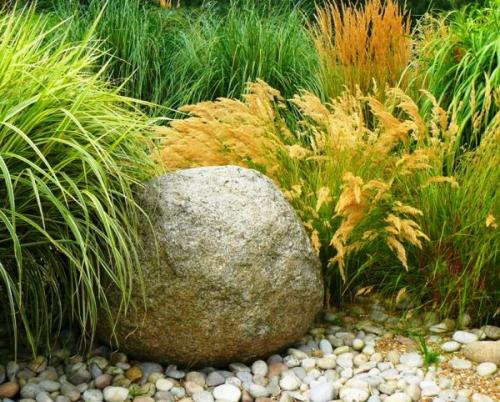
If the first type of plants has to be replaced after a year, then perennial grasses for the garden will retain their attractive appearance even after the end of the cold season and will look as expressive next year as before.
Cereals can differ not only in the duration of growth, but also in height, resistance to temperature extremes, light-loving and other characteristics. Please note that most of them do not differ in rich colors and attract attention due to the shape of the leaves.

To form an exquisite garden or a vegetable corner in a summer cottage, you can study the photos and names of cereals in the garden, but it would be better if you decide right away how to combine plants of different heights in one area to create a harmonious composition.
All decorative cereals for the garden are divided into three types, depending on their parameters:
- undersized cereals can grow up to 15-40 centimeters. Often they are used for border decor, as well as to create the outer borders of paths and roads in the garden. But you can use cereals of small height for individual flower beds, as well as rock gardens, rockeries and other decorative areas where a combination of different plant varieties is allowed;
- cereals of medium height can reach sizes from 40 to 90 centimeters. They draw attention to the plant and flower zones, formed from several tiers. Also, this group can be used to create separate "islands" of cereals in the garden or planted in mixborders so that ears and panicles give the effect of continuous flowering in these areas;
- tall varieties exceed 90 centimeters in height. They are used to create background compositions in flower beds, consisting of several levels of plants. Also, with the help of tall cereals, you can create original living screens to protect flower beds from strangers.
Despite the different appearance, cereal plants of any group can be useful in the design of gardens in summer cottages, so we will tell you about each category and offer several varieties that can be used to transform landscape design.
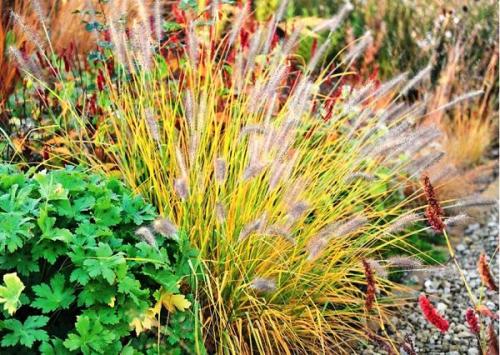
Cereals are
Cereal crops are or were in the past the basis of the nutrition of many peoples, due to their nutritional value and beneficial properties.
